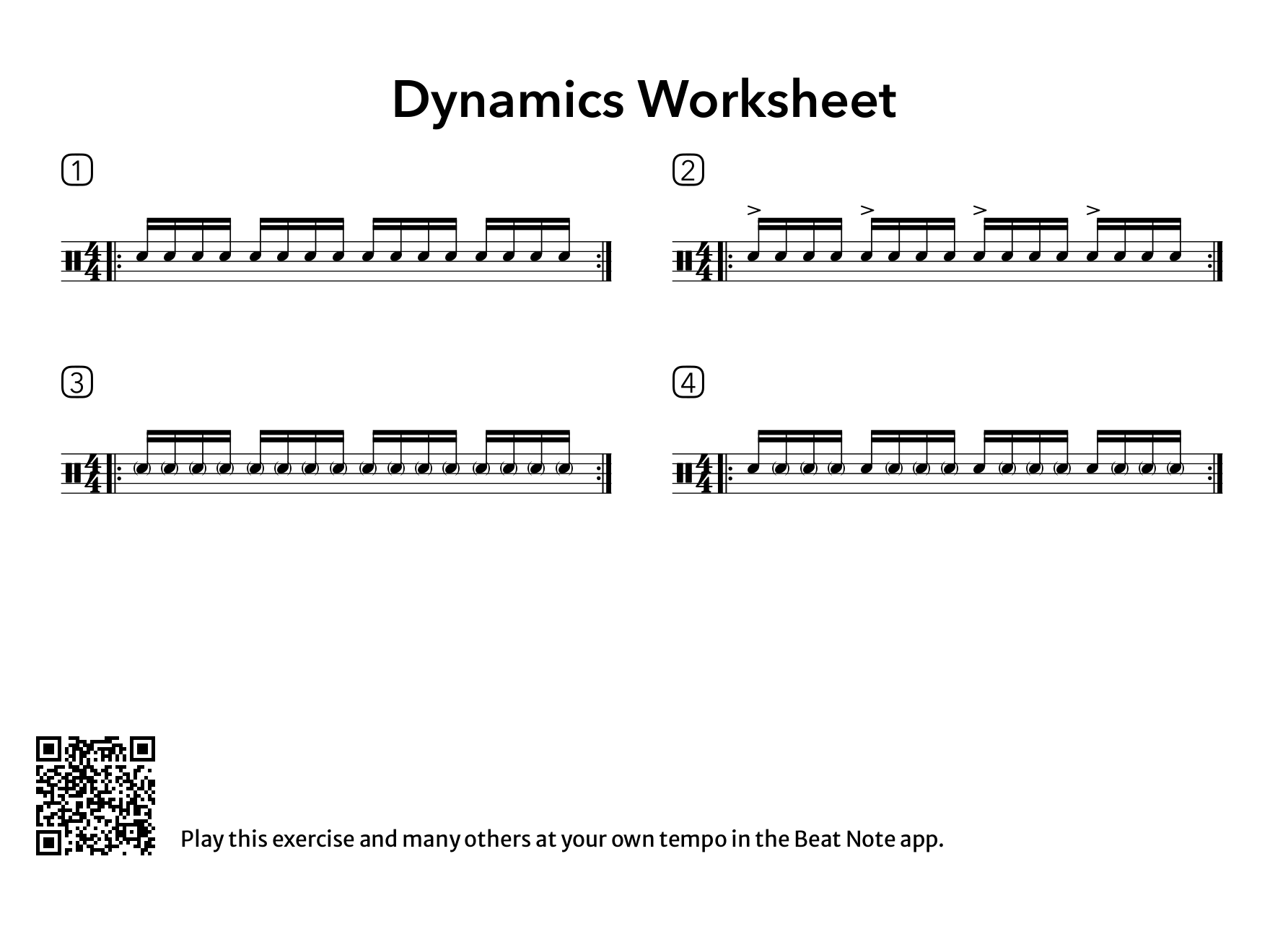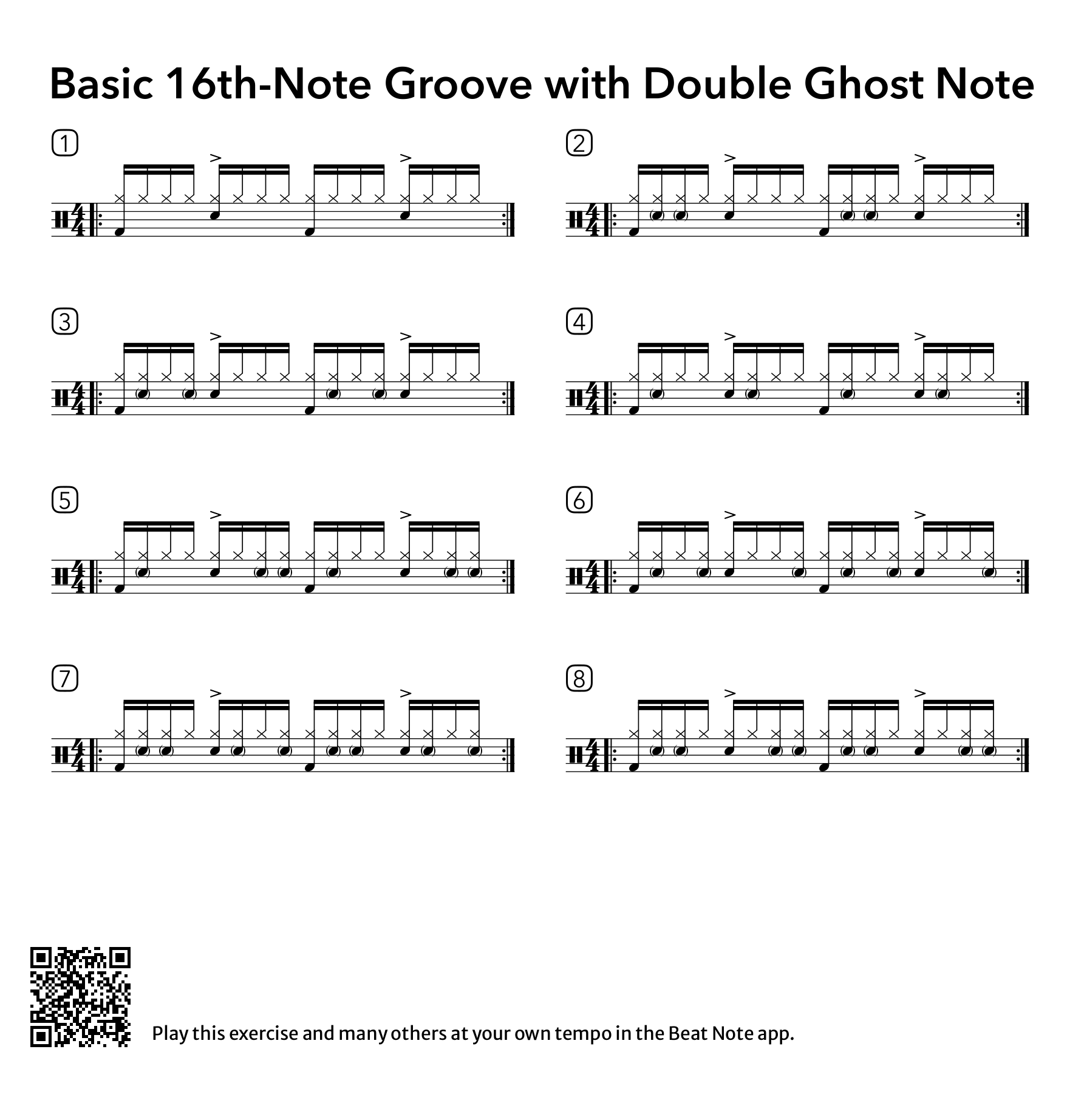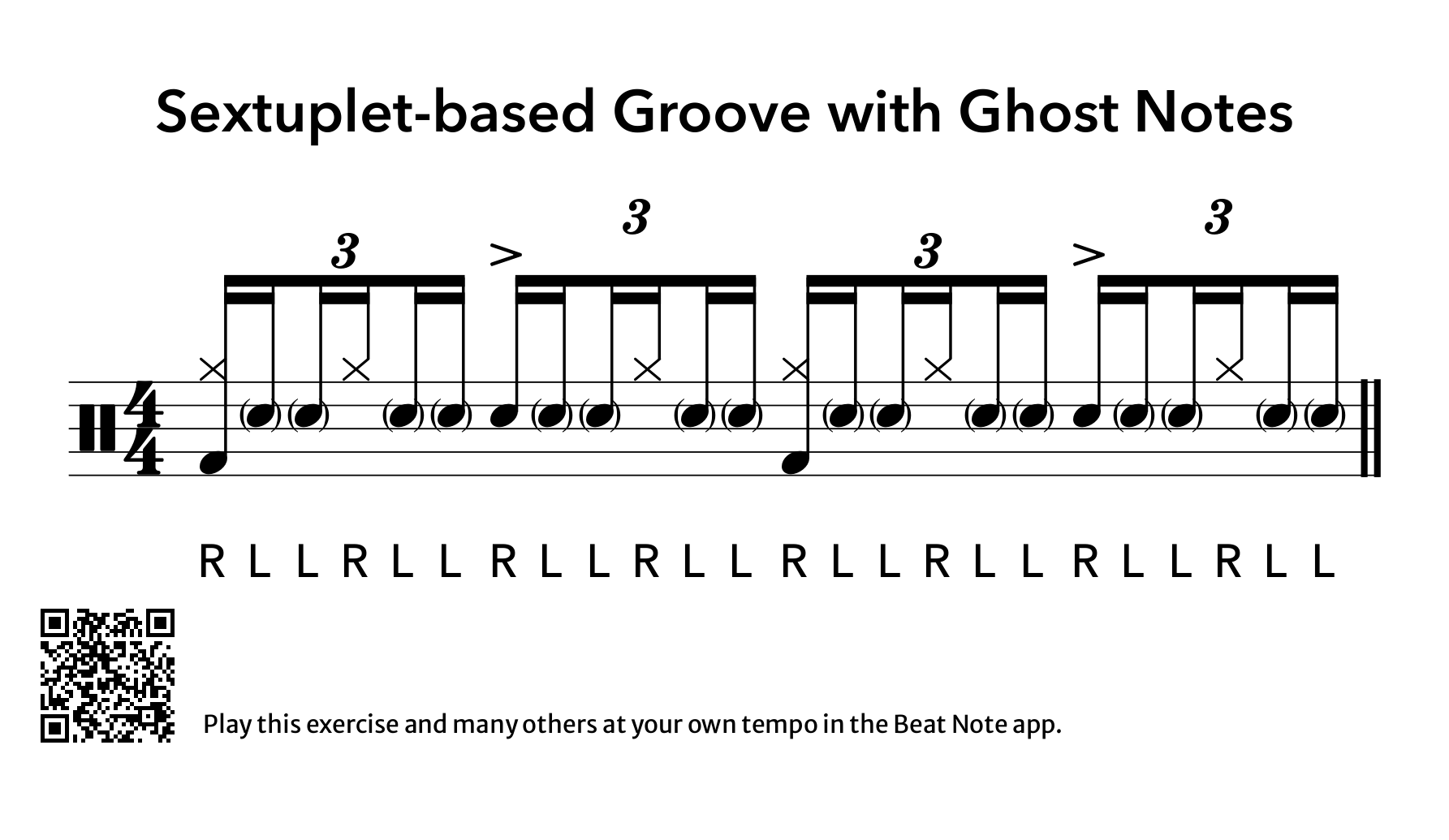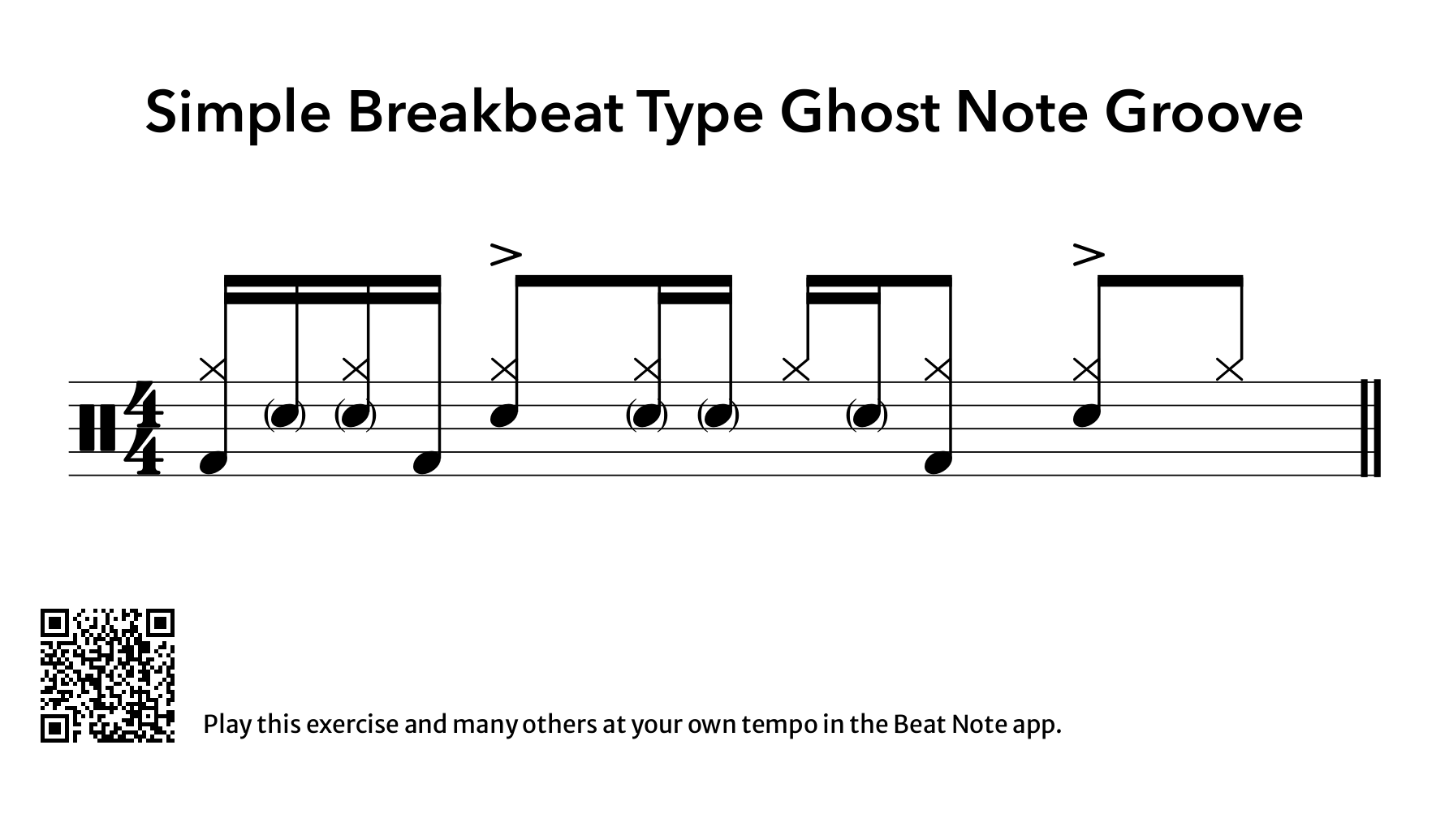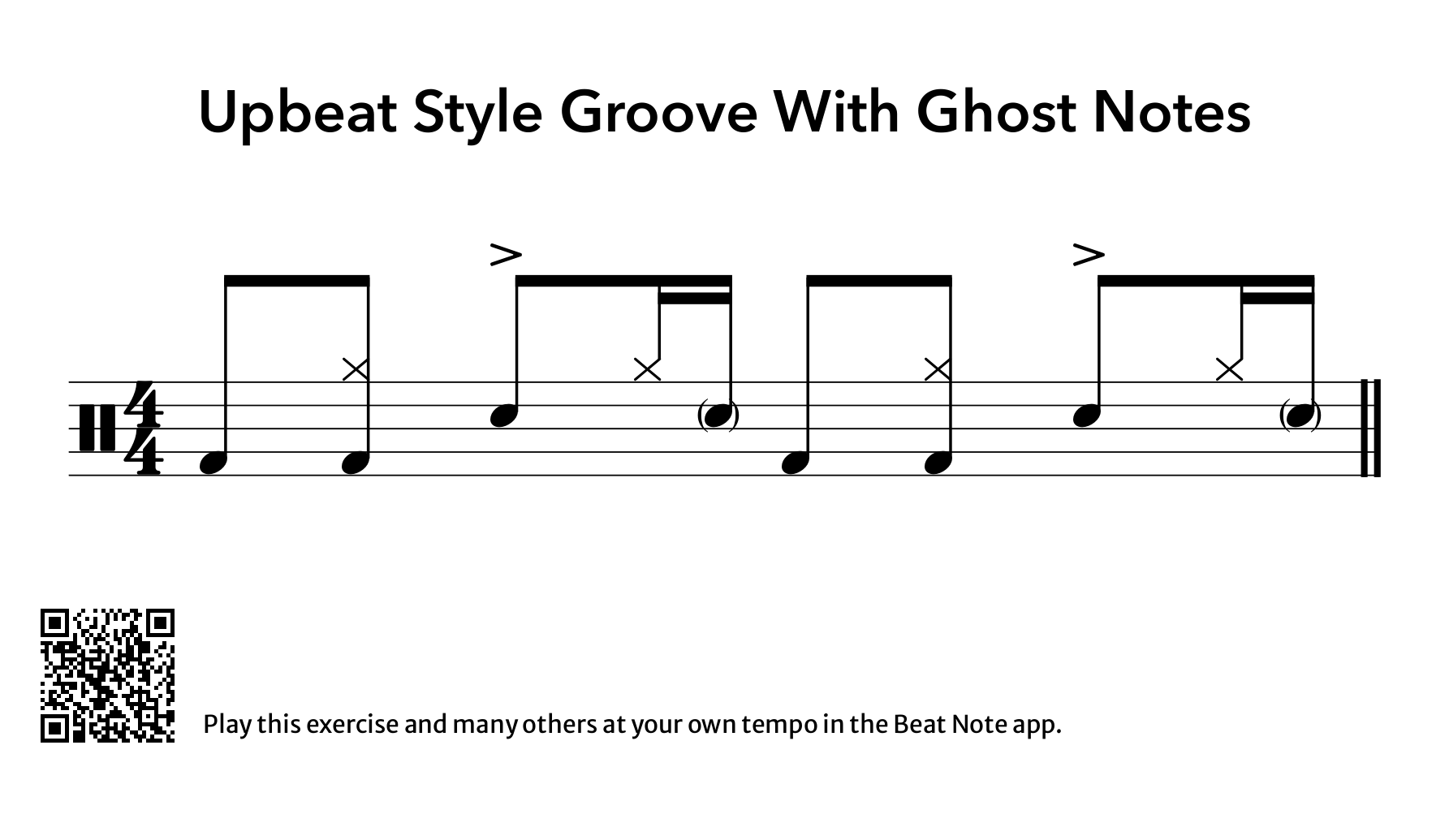Ghost notes and accents are the salt and pepper of any groove. They enhance the flavor of your playing and bind a groove together in such a unique way that we can distinguish one player from another based on how they are used. Today, we’ll take a deep dive into ghost notes, break down what they are (and aren’t), explain how to play them, and then apply them to useful drum kit grooves.
In This Article
What Are Dynamics?
Dynamics in drumming are all about the variations in volume and intensity of your playing. They are a key element that distinguishes good drummers from great ones. Once you can apply drum dynamics, you can add depth, emotion, and nuance to your playing. When we talk about dynamic range in drumming, we’re talking about playing that sounds like thunderous fortissimo (very loud) to whisper-quiet pianissimo (very soft). This range is what gives music its ebb and flow, its tension and release. So whether you’re playing stadium rock or intimate jazz, your control over dynamics shapes the entire feel of a song.
Key aspects of dynamics in drumming include:
- Volume control: The ability to play at different volume levels consistently
- Dynamic contrast: Creating intentional differences between loud and soft parts
- Accent placement: Using sudden increases in volume for emphasis
- Ghost notes: Very quiet notes that add texture without overpowering
Let’s talk about personal EQ – it’s like fine-tuning the volume balance of your drum kit. This isn’t about what happens at the mixing board; it’s all about how you, the drummer, control the relative volumes of your kick, snare, toms, and cymbals. Think of it as your signature sound – a sort of sonic fingerprint.
So while you’re working on those ghost notes, pay attention to your overall kit balance too.
Dynamics on Drum Set
To master and apply this concept to your playing, start with a practice pad or snare drum and learn to control dynamics in your hands and feet. There are eight dynamics (volumes) we can play at. In music generally, they are named as follows, from loudest to softest:
- FFF - fortississimo (triple forte)
- FF - fortissimo (double forte)
- F - forte
- MF - mezzo forte
- MP - mezzo piano
- P - piano
- PP - pianissimo (double piano)
- PPP - pianississmo (triple piano)
That being said, you likely haven’t bothered much with these names. As drum set players, we mostly use the center six, from FF to PP (double forte to double piano). We tend to use a 2-3 level dynamic system. The loudest sound is your snare drum rim shot, and the softest is your ghost notes. Basically, accents are loudest, followed by taps, and last are ghost notes.
In the marching world, we can also assign designated heights off the surface of the drum to these dynamic markings for consistent sound and heights. 3” - 6” - 9” - 12” - 15”
Let’s dig in with Drum Notation by Beat Note, hear these, and play along:
Dynamics Worksheet
- play 16th taps at about “ or mf (mezzo forte)
- next play 16th taps at about 3” (mf) with accents at about 9” (f)
- 16th ghost notes at about 2” or mezzo piano (mp). To play ghost notes, lower the volume of your taps down one dynamic.
- 16th ghost notes with taps
Open Dynamics Worksheet in Drum Notation by Beat Note to change the tempo
See how the notes on the snare drum now have parentheses? Those mean they are quieter than regular taps and are called ghost notes. Dynamically, they could be at piano “p” or mezzo piano “mp”, which is about 1”-3” off the head.
Let’s spread our dynamic range even further.
16th Ghost Notes with Accents
Keeping the ghost notes at a lower / medium dynamic, “mp” (mezzo piano), pop the accents at a louder dynamic, “f” (forte)
Open 16th Ghost Notes with Accents in Drum Notation by Beat Note to change the tempo
Seasoning Your Grooves with Ghost Notes
Now that we’ve covered the basics, let’s apply ghost notes to some drum kit grooves.
Basic 8th-Note Groove with Single Ghost Note
Here, we add one partial as ghost notes. Notice how the beats become so much more interesting with just that!
Open Basic 8th-Note Groove with Single Ghost Note in Drum Notation by Beat Note to change the tempo
Basic 16th-Note Groove with Double Ghost Note
Here, we add two partials of ghost notes in different places.
Open Basic 16th-Note Groove with Double Ghost Note in Drum Notation by Beat Note to change the tempo
Triplet-based Groove with Ghost Notes
Basic triplet based beat with single ghost notes.
Open Triplet-based Groove with Ghost Notes in Drum Notation by Beat Note to change the tempo
Sextuplet-based Groove with Ghost Notes
Sextuplet-based Ghost Note groove incorporating pud-da-da sticking.
Open Sextuplet-based Groove with Ghost Notes in Drum Notation by Beat Note to change the tempo
This beat is very reminiscent of a Shuffle Groove. If you’re interested in learning about shuffle grooves and play bangers like Toto’s Rosanna, I explained them in detail here: Shuffle Groove Basics
Simple Breakbeat Type Ghost Note Groove
Basic breakbeat groove incorporating double and single Ghost Notes and Accents. Notice how this would sound much more dull when everything was played with the same dynamics!
Open Simple Breakbeat Type Ghost Note Groove in Drum Notation by Beat Note to change the tempo
Upbeat Style Groove With Ghost Notes
Upbeat high hat groove with single ghost notes. Despite being played quietly, the Ghost Note here carries such a vital part of the beat!
Open Upbeat Style Groove With Ghost Notes in Drum Notation by Beat Note to change the tempo
This section provides a variety of grooves that incorporate ghost notes, from basic 8th-note patterns to more complex sextuplet-based grooves. Practice these patterns to develop your ghost note technique and apply it to different musical contexts.
Ghost Notes vs. Grace Notes
Ghost notes have rhythmic value and are played in time at a lower dynamic volume than taps. Grace notes have no specified rhythmic value; examples include the grace note in flams, double-stroke ruffs, triple-stroke ruffs, etc. These grace note examples can be played from closed to open or even slurred.
Ghost Notes vs. Muted Notes
Muted notes (also called dead strokes) are a playing technique where you mute the instrument as you hit or quickly after. This generates a shorter sustain. When applied to your kick, this is called “playing into the head” or “burying the beater.” Dead strokes are used for a specific sonic choice, while ghost notes are simply a lower dynamic.
More Tips for Mastering Ghost Notes
- Ghost notes are in-time and have rhythmic value.
- Play them at a lower volume than your taps for the most effective use.
- Master using them in time by playing with a click or with Drum Notation by Beat Note to hear the proper subdivision.
- You can mix and match 16th ghost notes and 16th triplet ghost notes.
- Once you master playing ghost notes locked to a grid, try experimenting with slurring or swinging your inner beats.
Finally, here’s a boxy ghost groove to inspire you:
The best way to learn is to listen to the greats. Check out this playlist of killer ghost note masters for inspiration.
As always, I hope you are enjoying your musical journey. Happy drumming!
Z
